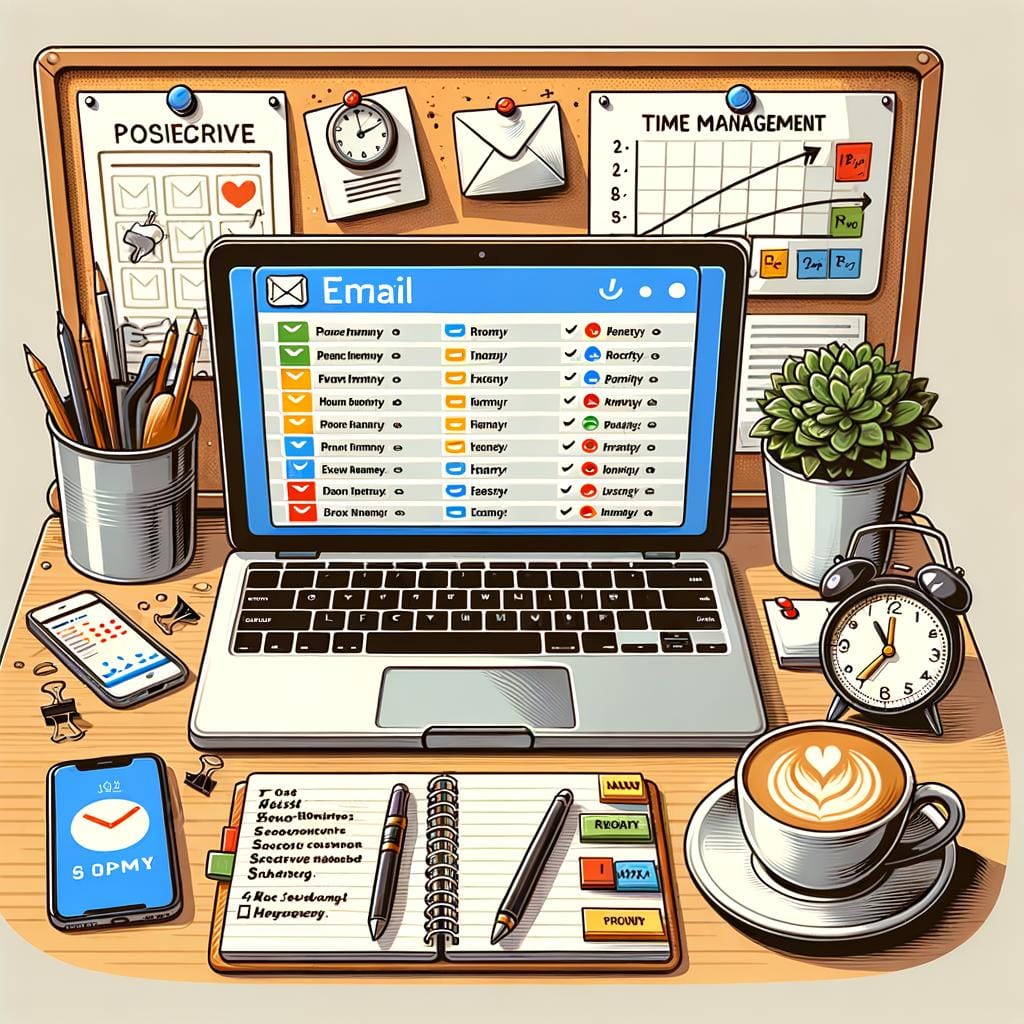In today’s fast-paced and digital-centric world, it’s easy to become overwhelmed by the constant barrage of notifications, emails, and social media. This is where the importance of digital detox comes into play.
By taking a step back from our devices and disconnecting from the online world, we can regain a sense of balance and focus on our mental well-being. In this article, we’ll explore some valuable digital detox tips that can help you reclaim your time and energy in a tech-saturated environment.
Many individuals may not realize when they’ve reached a point of excessive digital consumption. Signs such as fatigue, irritability, poor sleep quality, and difficulty focusing are indicators that it may be time for a digital detox. Recognizing these signals is crucial in order to address the negative effects of prolonged screen time on our mental health and overall well-being. Setting boundaries with technology is essential to establishing a healthy relationship with our devices.
One effective tip in achieving this balance is creating designated digital-free zones in your home or workplace. These areas serve as sanctuaries free from distractions caused by screens and notifications, allowing you to fully immerse yourself in offline activities or simply enjoy moments of peace and quiet. By implementing strategies like mindful usage techniques and engaging in alternative activities away from technology, you can experience the benefits of unplugging and reconnecting with the world around you.
Signs That Indicate You Need a Digital Detox
In today’s digital age, it is easy to get caught up in the constant use of electronic devices such as smartphones, tablets, and computers. While technology has greatly benefited our lives, excessive use can lead to negative consequences.
Recognizing the signs that indicate you need a digital detox is crucial for maintaining a healthy balance between online and offline activities. Some common indicators include feeling anxious or stressed when separated from your devices, experiencing physical symptoms like eye strain or headaches from prolonged screen time, and neglecting important tasks or relationships due to excessive gadget use.
To address these warning signs effectively, it is essential to establish boundaries with technology. Setting limits on screen time, designating specific times of the day for device-free activities, and creating a digital-free zone in your home can help reduce the harmful effects of constant connectivity. By implementing these strategies, you can regain control over your usage habits and prioritize real-life interactions over virtual ones.
It is also important to practice mindful usage by being more intentional about how you engage with technology. This includes practicing proper posture while using devices, taking regular breaks to rest your eyes and mind, and being fully present in the moment rather than constantly checking notifications.
Engaging in offline activities is another key aspect of a successful digital detox. Instead of spending all your free time online, consider pursuing hobbies or interests that do not involve screens. Whether it’s reading a book, going for a nature walk, or engaging in creative pursuits like painting or crafting, finding alternative activities can help break the cycle of digital dependency.
Additionally, establishing a daily routine that includes designated times for unplugging and engaging in digital detox can promote a healthier relationship with technology. By reflecting on the benefits of taking breaks from digital devices – such as improved focus, better sleep quality, and enhanced overall well-being – you can commit to making positive changes in your daily life.
| Digital Detox Tip | Benefits |
|---|---|
| Set boundaries with technology | Reduced stress and anxiety levels |
| Engage in offline activities | Enhanced creativity and mental clarity |
| Establish a daily routine | Improved productivity and time management skills |
Setting Boundaries With Technology
In today’s digital age, it can be challenging to find a healthy balance between using technology for work, communication, and entertainment, and disconnecting to prioritize our mental well-being. Setting boundaries with technology is essential to ensure that we are not constantly overwhelmed by the constant stream of notifications and information. Here are some tips on how you can establish limits and guidelines for using digital devices effectively:
- Create designated device-free zones in your home or workplace where you are not allowed to use any digital devices. This could be the dining area, bedroom, or even certain rooms where you want to focus on offline activities or relaxation without distractions.
- Set specific time limits for using social media, browsing the internet, or watching videos. Use apps or built-in features on your devices to track your screen time and set reminders when you have reached your daily limit.
- Establish rules for yourself about when it is appropriate to use digital devices. For example, avoid using them during meals, before bedtime, or first thing in the morning. Instead, prioritize activities that promote mindfulness and connection with others.
By implementing these boundaries with technology, you can create a healthier relationship with your digital devices and improve your overall well-being. Remember that taking breaks from screens is essential for recharging your mind and reconnecting with the world around you. Incorporating these tips into your daily routine can help you achieve a more balanced approach to using technology while enjoying the benefits of a digital detox.
Creating a Digital-Free Zone
In today’s digital age, it can be challenging to escape the constant presence of technology. However, creating a digital-free zone in your home or workplace can provide you with a sanctuary from the distractions of screens and notifications. This designated space can serve as a retreat where you can disconnect from the virtual world and focus on being present in the moment.
The Importance of a Digital-Free Zone
Having a specific area that is free from digital distractions is crucial for your mental well-being. Constant exposure to screens has been linked to increased stress, anxiety, and difficulty concentrating. By establishing a digital-free zone, you are giving yourself the opportunity to unwind, relax, and recharge without the interference of technology. This space can also promote better sleep quality by reducing blue light exposure before bedtime.
Creating Your Digital-Free Zone
When designating a digital-free zone, choose a quiet area where you feel calm and relaxed. This could be a corner in your living room, a section of your bedroom, or even a particular spot in your office. Remove all digital devices from this area, including smartphones, tablets, laptops, and TVs.
Consider adding elements that promote relaxation and mindfulness such as comfortable seating, soft lighting, plants, or calming scents like lavender. Make it a habit to spend time in this space daily for activities such as reading, meditating, journaling, or simply enjoying moments of silence away from screens.
Practicing Mindful Usage
In today’s fast-paced digital world, practicing mindful usage of technology is crucial for maintaining a healthy balance between the virtual and real world. Being mindful means paying attention to the present moment without judgment, which can significantly enhance your overall well-being. Here are some essential digital detox tips to help you be more aware and present when using technology:
Firstly, try setting specific time limits for your digital device usage. Allocate dedicated periods during the day for checking emails, social media, or browsing the internet, and stick to these time boundaries. Use tools like screen time tracking apps to monitor your usage and ensure that you are not spending excessive hours on your devices.
Another effective technique is to practice single-tasking instead of multitasking when using technology. Focus on one activity at a time, whether it’s replying to messages, reading an article, or watching a video. By giving your full attention to each task, you can increase productivity and reduce the urge to constantly switch between different apps or tabs on your devices.
Furthermore, incorporate mindfulness practices into your daily routine such as deep breathing exercises or short meditation sessions before using digital devices. These activities can help center your mind and increase awareness of your surroundings, leading to a more conscious and intentional interaction with technology. Remember that being mindful of your digital usage not only benefits your mental health but also enhances your relationships and improves overall quality of life.
| Digital Detox Tip | Description |
|---|---|
| Set Time Limits | Allocate specific periods for device usage |
| Practice Single-tasking | Focus on one activity at a time |
| Incorporate Mindfulness Practices | Add breathing exercises or meditation before device use |
Engaging in Offline Activities
In a world where digital devices have become an integral part of daily life, it’s easy to get caught up in constant screen time. However, taking a break from the digital world can be incredibly beneficial for our mental well-being.
Engaging in offline activities not only allows us to disconnect and recharge but also helps us reconnect with the tangible world around us. Here are some suggestions for alternative activities to do instead of constantly being on digital devices:
- Explore the Great Outdoors: Spending time in nature can have a calming and rejuvenating effect on both mind and body. Whether it’s going for a hike, biking through a scenic trail, or simply taking a leisurely walk in the park, immersing yourself in nature can help reduce stress and improve overall mood.
- Rediscover the Joy of Reading: Instead of scrolling through endless social media feeds, pick up a book and allow yourself to get lost in a good story. Reading not only enhances cognitive function but also provides a much-needed escape from the digital noise.
- Cultivate a Hobby: Whether it’s painting, gardening, knitting, or playing a musical instrument, engaging in a hobby can be a fulfilling way to pass the time without relying on digital devices. Hobbies not only offer a creative outlet but also help reduce stress and boost self-esteem.
By incorporating these offline activities into your routine, you can gradually decrease your dependence on digital devices and experience the many benefits of taking a digital detox. Remember that finding balance between technology use and offline activities is key to maintaining overall well-being in today’s digitally-driven world.
Establishing a Daily Routine
In today’s digital age, it is easy to become consumed by our devices and constantly be connected to the online world. However, it is essential to take a step back and prioritize our mental well-being by engaging in a digital detox. Establishing a daily routine that includes designated times for unplugging from technology can significantly benefit our overall health and happiness.
Setting Time Boundaries
One important aspect of incorporating a digital detox into your daily routine is setting specific time boundaries for when you will disconnect from your devices. This can include allocating certain hours during the day where you commit to being tech-free, such as before bedtime or during meals. By establishing these boundaries, you can create a healthier balance between screen time and personal time.
Scheduling Offline Activities
Another crucial component of developing a daily routine for digital detox is scheduling offline activities to replace screen time. Whether it’s exercising, reading a book, spending time outdoors, or engaging in hobbies like painting or cooking, having planned activities can help reduce the temptation to constantly reach for your phone or computer. By filling your schedule with meaningful offline pursuits, you can rediscover the joy of living in the moment.
Practicing Self-Care
Incorporating self-care practices into your daily routine is also vital for maintaining a successful digital detox. Taking time for mindfulness activities like meditation, yoga, or journaling can help reduce stress and improve mental clarity. Additionally, ensuring you get an adequate amount of sleep each night and prioritizing healthy habits such as exercise and nourishing meals are essential for overall well-being.
Remember that self-care goes hand in hand with disconnecting from technology and allowing yourself the space to recharge and unwind. By following these tips and creating a structured daily routine that includes moments of digital detox, you can experience the numerous benefits of taking a break from constant screen time on both your mind and body.
Reflecting on the Benefits
In today’s fast-paced digital age, where technology plays a significant role in our daily lives, the concept of digital detox has emerged as a crucial practice for maintaining mental health and overall well-being. Reflecting on the benefits of taking a break from digital devices can provide valuable insights into the positive impact it can have on our lives.
By recognizing the importance of unplugging and engaging in offline activities, individuals can experience a renewed sense of balance and fulfillment.
One of the key benefits of practicing a digital detox is the opportunity it provides for self-reflection and mindfulness. By disconnecting from constant screen time and notifications, individuals can focus on being present in the moment and cultivating deeper connections with themselves and those around them. This intentional break from technology allows for improved mental clarity, reduced stress levels, and enhanced cognitive function.
Furthermore, exploring the positive impact of digital detox on mental health reveals its potential to promote better sleep patterns, increased productivity, and heightened creativity. By setting boundaries with technology, creating digital-free zones, and establishing a daily routine that includes designated times for unplugging, individuals can cultivate healthier tech habits and prioritize their well-being.
Incorporating these digital detox tips into one’s lifestyle can lead to a more balanced approach to using technology and ultimately contribute to improved overall mental health and quality of life.
Frequently Asked Questions
How Do I Detox Myself Digitally?
Detoxing digitally involves reducing the amount of time spent on electronic devices and social media platforms. This can be done by setting limits, creating tech-free zones in your home, and being mindful of how technology is affecting your mental well-being.
How Long Does It Take for Digital Detox?
The duration of a digital detox can vary depending on individual preferences and goals. Some people may benefit from taking a short break, such as a weekend without screens, while others may choose to take longer breaks lasting weeks or even months. It ultimately depends on how dependent you are on technology and how much time you need to reset.
What Are the Stages of the Digital Detox?
The stages of a digital detox typically involve realizing the need for a break from technology, setting boundaries and limits on device usage, implementing strategies to reduce screen time, dealing with withdrawal symptoms like anxiety or boredom, finding alternative activities to replace screen time, and eventually establishing a healthier relationship with technology.
It’s important to approach each stage mindfully and gradually to avoid feeling overwhelmed.

Hello, I’m April Denton, your go-to expert for all things home decluttering and organization. With over a decade of experience helping individuals transform their living spaces into serene, clutter-free sanctuaries, I am passionate about the life-changing benefits of decluttering. My journey into the world of organization began out of necessity, juggling a busy career and a bustling household. I quickly realized that a well-organized home was the key to a more balanced, stress-free life.





